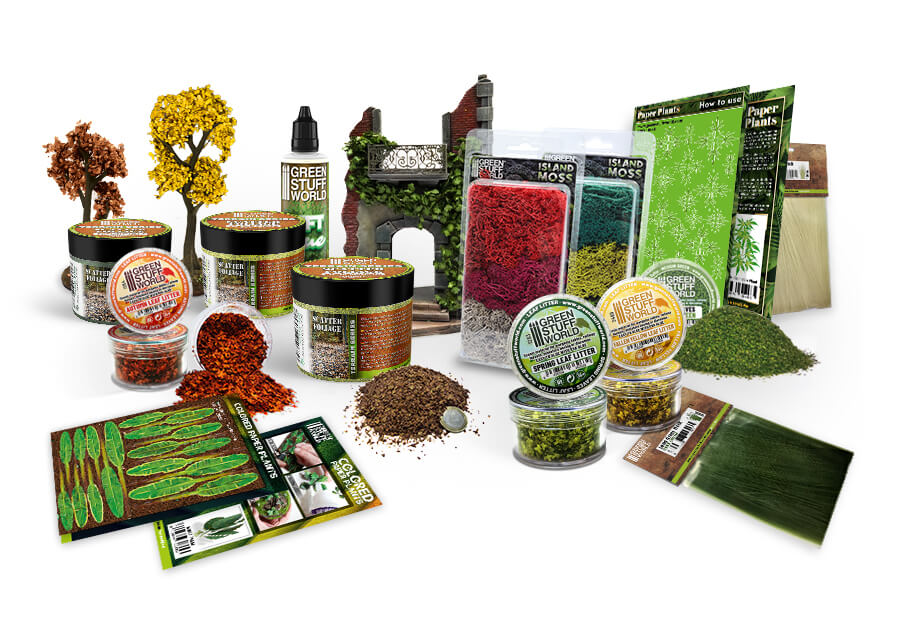Reference: 8436554360475ES
Brand: Green Stuff World
Metal sheets for magnets
Metal sheets for magnets | Rubber Steel Sheet Self Adhesive
 Cookie preferences
Cookie preferencesWe use our own and third party cookies to collect information to improve our services and to analyze your browsing habits. If you continue browsing, you accept their installation. You can configure your browser to prevent their installation.
Required cookies
Always active
These cookies are strictly necessary for the operation of the site, you can disable them by changing the settings of your browser but you will not be able to use the site normally.
Cookies used
Functional cookies
These cookies provide necessary information to applications of the website itself or integrated by third parties, if you disable them you may find some problems in the operation of the page.
Cookies used
Performance cookies
These cookies are used to analyze the traffic and behavior of customers on the site, help us understand and understand how you interact with the site in order to improve performance.
Cookies used
Guided cookies
These cookies can be from the site itself or from third parties, they help us to create a profile of your interests and to offer you advertising aimed at your preferences and interests.
Cookies used
The user is informed that he/she has the possibility of configuring his/her browser so that he/she is informed of the reception of cookies, being able, if he/she so wishes, to prevent them from being installed on his/her hard drive.
Below we provide links to various browsers, through which you can make such configuration:
Firefox from here: https://support.mozilla.org/es/kb/Deshabilitar cookies de terceros
Chrome from here: https://support.google.com/chrome/answer/95647?hl=es
Internet Explorer from here: https://support.microsoft.com/en-us/windows/manage-cookies-in-microsoft-edge-view-allow-block-delete-and-use-168dab11-0753-043d-7c16-ede5947fc64d
Safari from here: https://support.apple.com/es-es/guide/safari/sfri11471/mac
Opera from here: https://help.opera.com/en/latest/web-preferences/#cookies
Reference: 8436554360475ES
Brand: Green Stuff World
Metal sheets for magnets | Rubber Steel Sheet Self Adhesive
Reference: 8436554365050ES
Brand: Green Stuff World
Instant glue | CA glue
Reference: 5035167000490ES
Brand: Green Stuff World
Milliput Standard Yellow Grey - Epoxy putty for all kinds of applications.
Reference: 8435646509365ES
Brand: Green Stuff World
Black Plastic Bases | Black plastic base adapters 20-25mm
There are 129 products.
Reference: 8435646501093ES
Brand: Green Stuff World
Leaf Litter
Reference: 8435646501079ES
Brand: Green Stuff World
Leaf Litter
Reference: 8435646501086ES
Brand: Green Stuff World
Leaf Litter
Reference: 8435646501116ES
Brand: Green Stuff World
Leaf Litter
Reference: 8435646502885ES
Brand: Green Stuff World
Leaf Litter
Reference: 8435646501062ES
Brand: Green Stuff World
Leaf Litter
Reference: 8435646501673ES
Grass TUFTS - 12mm self-adhesive - BURN
Reference: 8436574508956ES
Brand: Green Stuff World
Tuft glue for applying tufts, flock, and other types of hobby vegetation
Reference: 8436574509472ES
Brand: Green Stuff World
Putting the Green in Green Stuff World - Paper Plants - Cannabis
Reference: 8436574508413ES
Brand: Green Stuff World
Grass Mat Cutouts - Purple Meadow
Reference: 8436574508406ES
Brand: Green Stuff World
Grass Mat Cut-Outs - Yellow Flower Field
Reference: 8436574508390ES
Brand: Green Stuff World
Grass Mat Cut-Outs - Dry Fields
Reference: 8436574508383ES
Brand: Green Stuff World
Grass Mat Cut-Outs - Brown Moor Fields
Reference: 8436574508376ES
Brand: Green Stuff World
Grass Mat Cut-Outs - Ponderosa Green Meadow
Reference: 8436574508369ES
Brand: Green Stuff World
Grass Mat Cut-Outs - Green Meadow
Reference: 8436574508291ES
Brand: Green Stuff World
Grass Mats - Beige
Miniature basing materials are various decorative elements that are used to build and decorate the base on which a miniature figurine is displayed. These compatible Warhammer basing materials are typically used in wargaming, roleplaying games, and model painting.
The choice of basing material often depends on the desired effect and the type of miniature being displayed. Some tabletop enthusiasts even combine multiple resources to build a more complex and unique display.
There is a large variety of basing material miniatures that can be used for miniature models. Here are some common hobby materials used to decorate and finish your miniatures:

Compatible Warhammer basing is a fun and creative process that can add a lot of character and immersion to your miniatures. Here is a general guide on how to create compatible Warhammer bases:
Remember, compatible Warhammer basing is a fun and creative process that allows you to showcase your individuality and style. Experiment with different materials and techniques to create unique and memorable bases for your miniatures.
Getting compatible Warhammer 40k base ideas can be a fun and creative aspect of the hobby, allowing you to customize your miniatures and make them stand out on the tabletop. Here are some basing 40k®ideas to inspire your base decoration:
Remember that the key to successful base decoration is creativity and attention to detail. Experiment with different techniques, types of miniature basing materials, and materials to achieve the desired look for your compatible Warhammer 40k® miniatures. Whether you're aiming for a gritty, battle-worn aesthetic or a more fantastical appearance, the possibilities for base decoration are virtually limitless in the grim darkness of the far future.
Not what you were looking for? You might be interested in our paint mat.
Warhammer® and Warhammer 40k® are registered trademarks of Games Workshop Limited. The products offered are not affiliated with, authorized by, or endorsed by this company. Green Stuff World only manufactures and markets compatible products designed for use with this and other miniature lines.